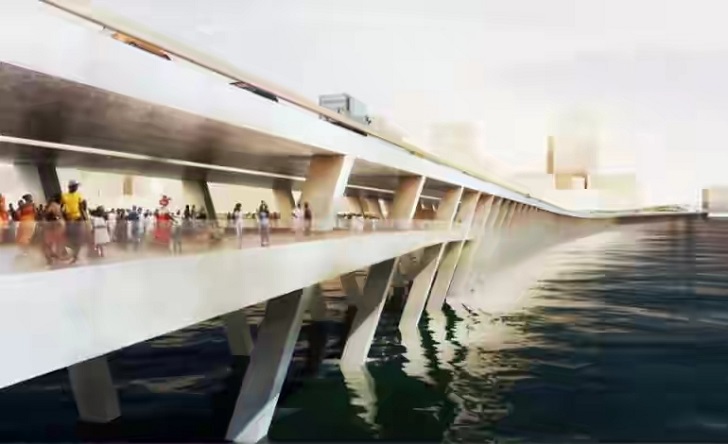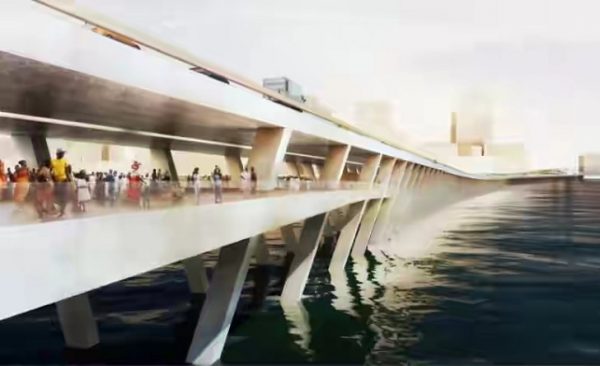On Wednesday the 25th of May, the Lagos State Government finally signed a Memorandum of Understanding (MOU) for the construction of the much talked-about fourth mainland bridge. The signatories to the Memorandum also included a host of finance and construction companies which make up the consortium saddled with the responsibility of bringing the fine model simulations of the long-awaited bridge to life. The ₦844 billion project is expected to take three years to complete, after which it should be open to public use, serving the function of decongesting the Eko. Carter and Third Mainland bridges.
According to the governor of Lagos State, Akinwunmi Ambode, the bridge will link the Lekki-Ajah and Ikorodu axes of the State. His detailed description of the route to be taken by the bridge reveals that it is to run through Lekki, Langbasa and Baiyeku towns on the State’s South Western corner, across the Igbogbo river basin, and link up to Itamago in Ikorodu. A connection will also be made with the Ojodu-Berger vicinity by crossing through the Lagos-Shagamu Road, and connecting inward Lagos-Ibadan Expressway. The bridge will be made up of eight interchanges which are designed to aid interconnection between different parts of the state. Apart from serving as a four-lane dual carriageway for vehicular traffic, it will also be able to accommodate pedestrians and cyclists, with its two service areas and additional pedestrian crossings.
Ger Hogan, a consultant at Advanced Engineering consultants, pointed out that the stated cost of ₦844 billion covered the three-year construction phase of the project. Additional expense was expected to be incurred over a concession time span of forty years from 2021-2061, with an annual operating cost for that period put at about ₦20 billion. After this, the project is to be handed over to the government.
The consortium of companies involved in the project includes Julius Berger Nigeria plc., Hi-Tech Construction Limited, JP-Morgan, Eldorado Nigeria Limited, Nigerian Westminster Dredging and Marine, Africa Finance Corporation, Access Bank, and Visible Asset Limited, which is to play the role of coordinating firm.
An examination of the plan for the bridge shows that it has the potential to ease traffic around the Eti Osa-Lekki corridor of the State, which is fast becoming a hub of industrial and recreational activity. Cutting the time and stress it takes to access the area could boost the economy of the State as it will encourage more business driven movements into the axis from the mainland. The downside to it is the possible demolition of about 800 houses which lie in and around the proposed path for the bridge. The state government had to change an initial alignment which, if implemented, would have seen the removal of 3,000 structures; the revision of the original plan was attributed to the high cost of such an exercise to the state.
It is hoped that the landscape of Lagos state will get a facelift from this massive bridge and that fewer Lagosians will still be wearing traffic-inspired frowns on their faces after its completion.


